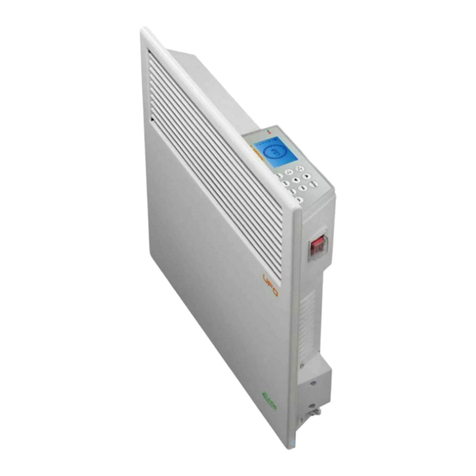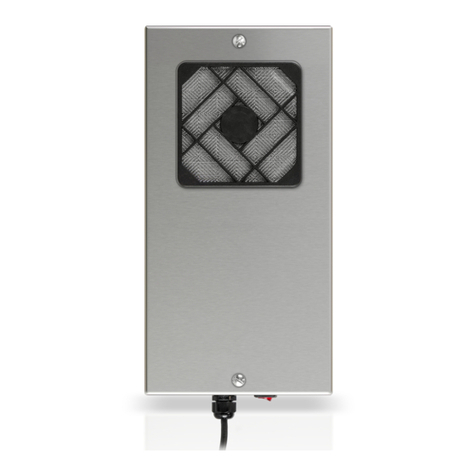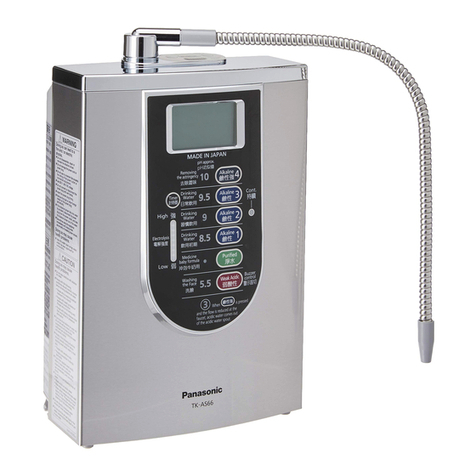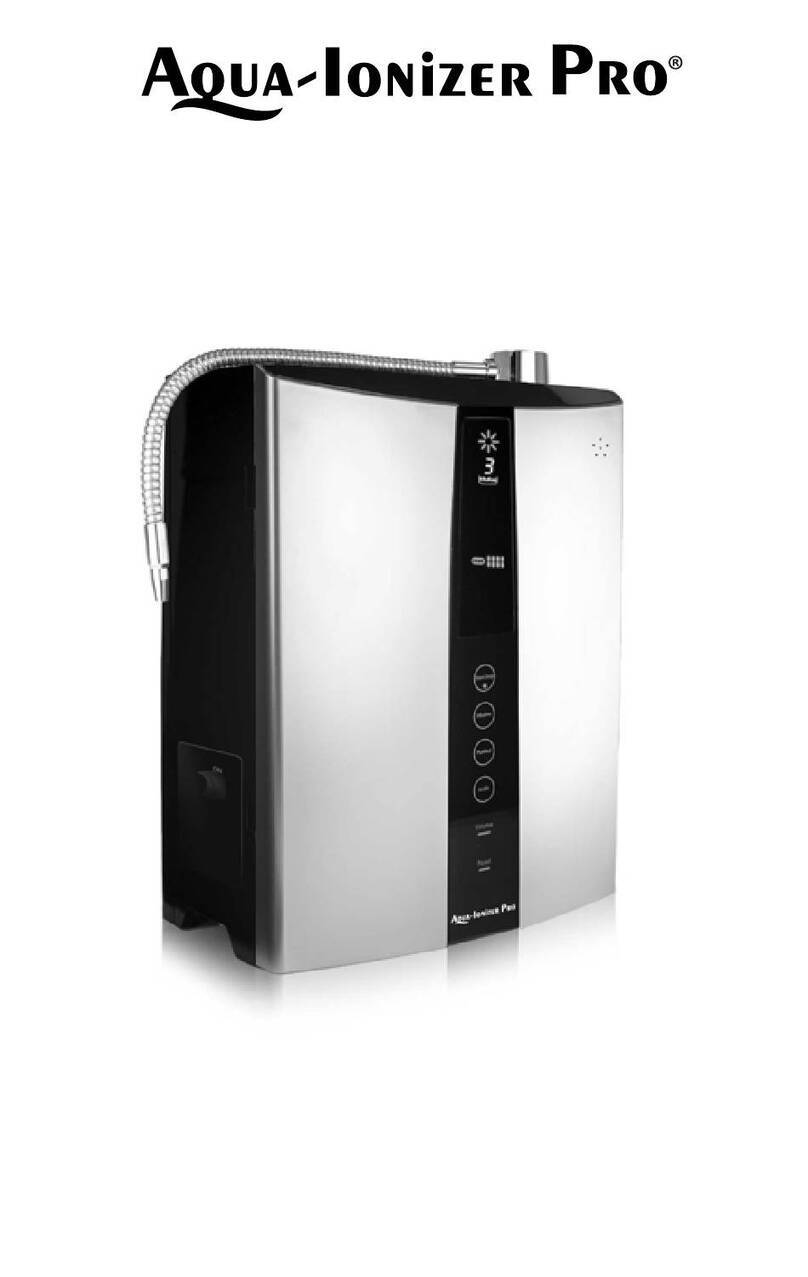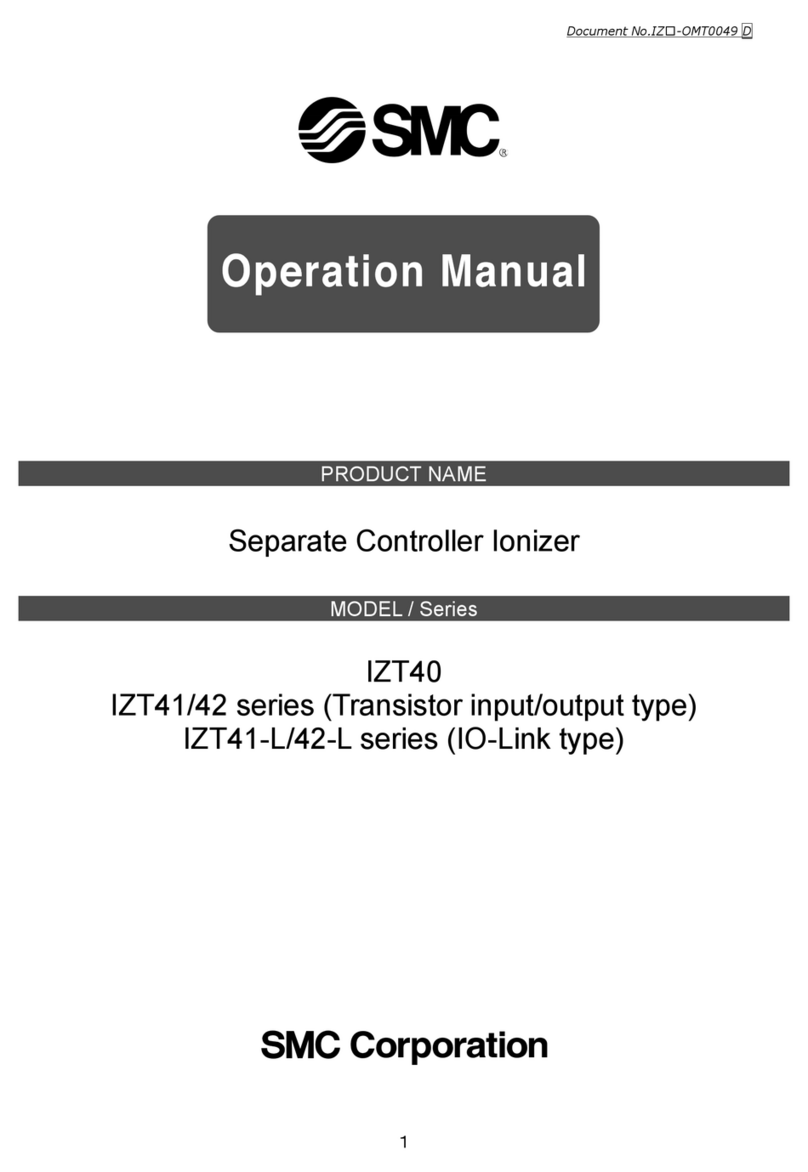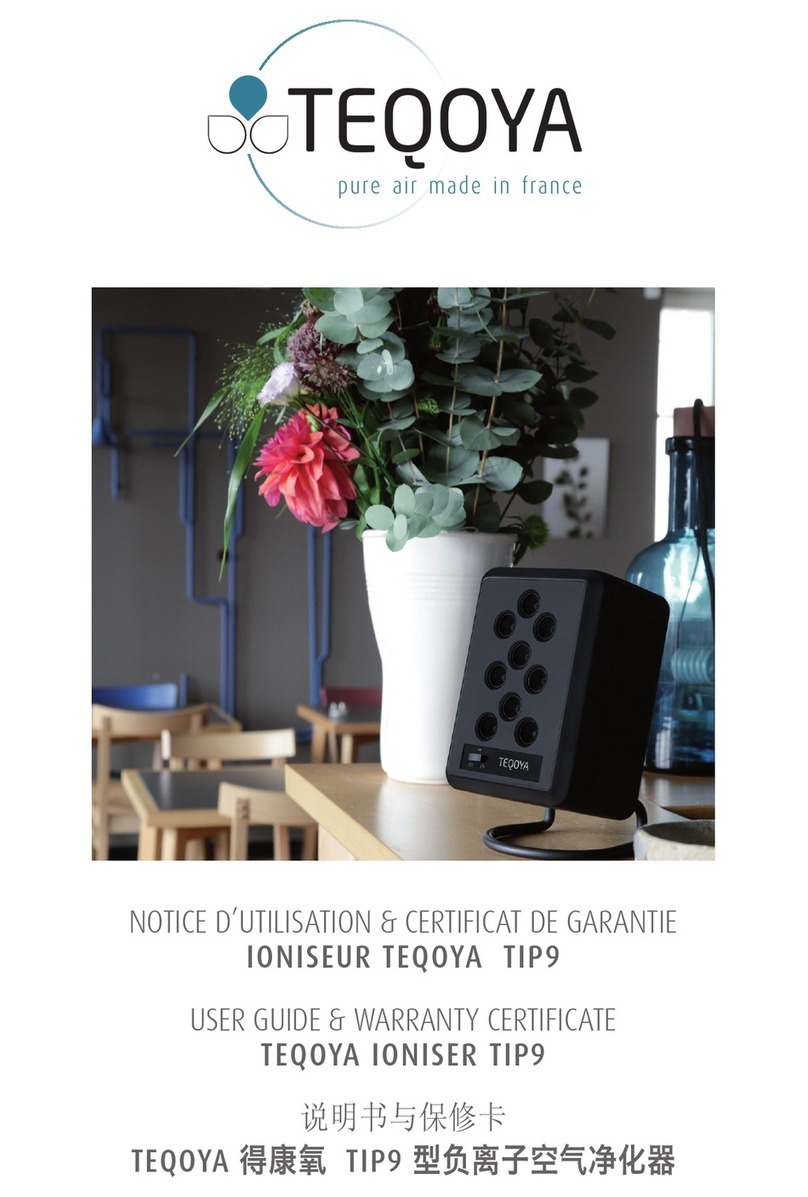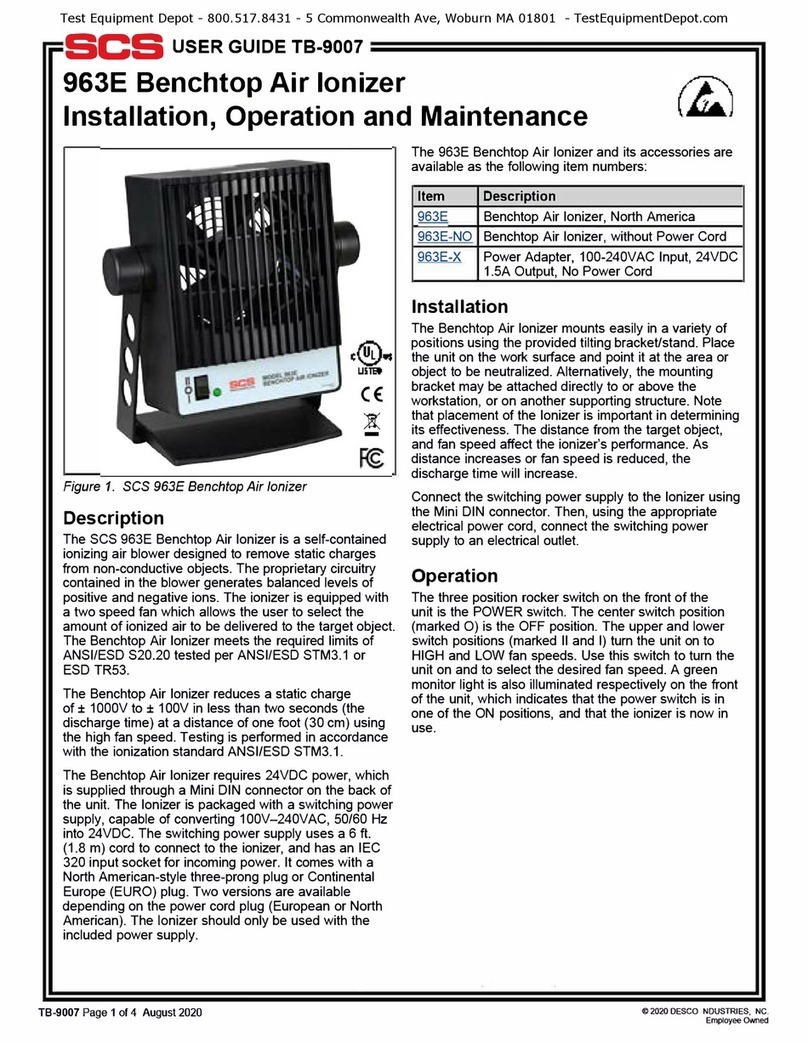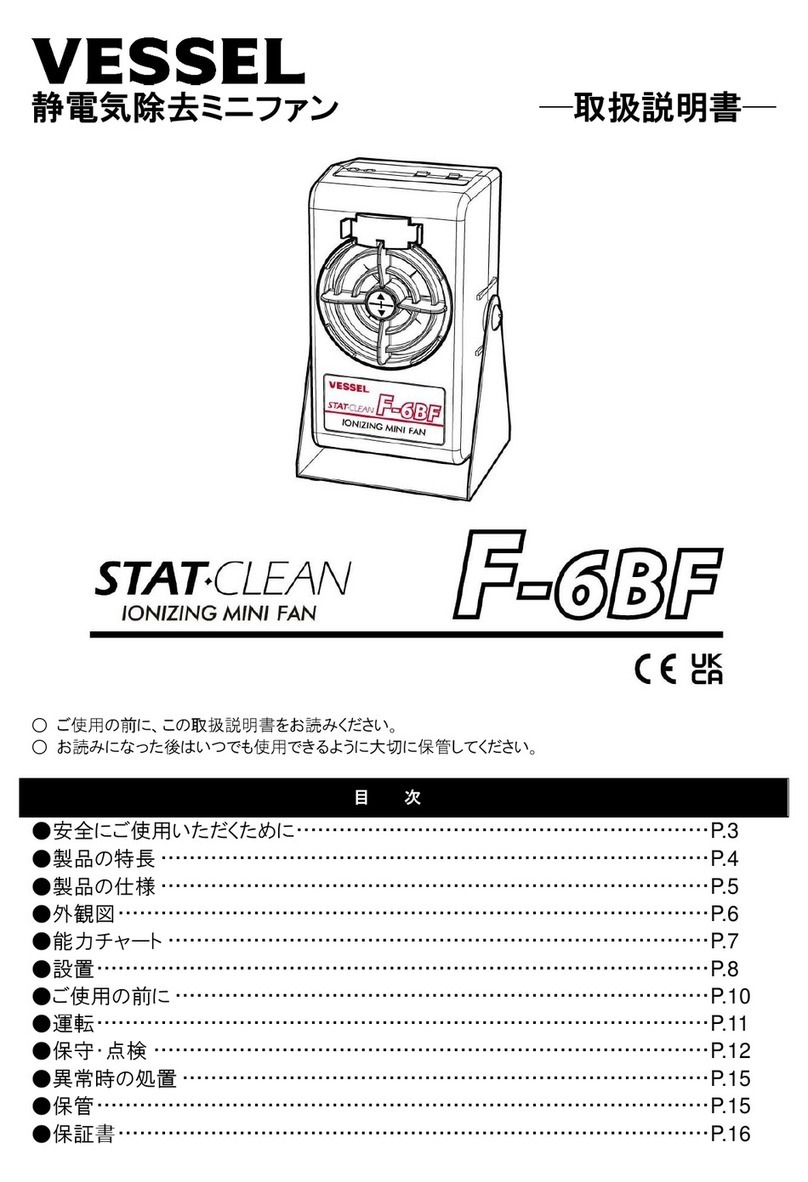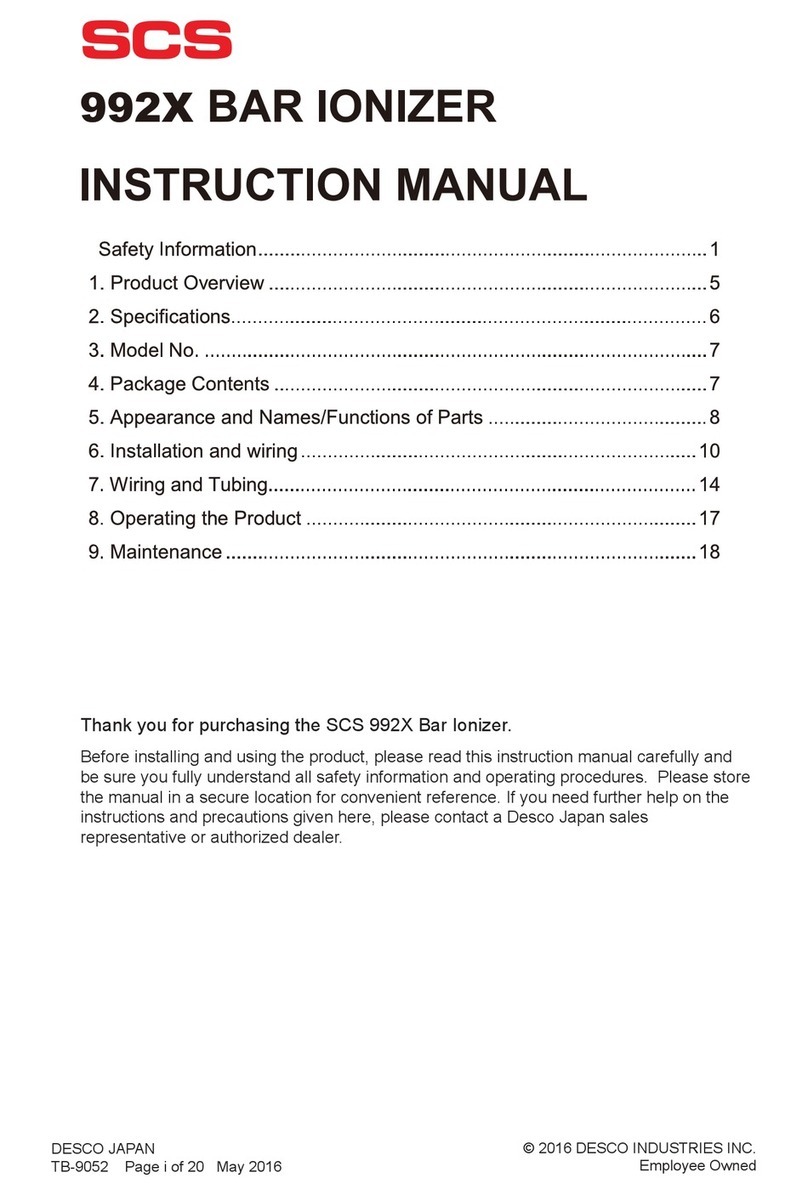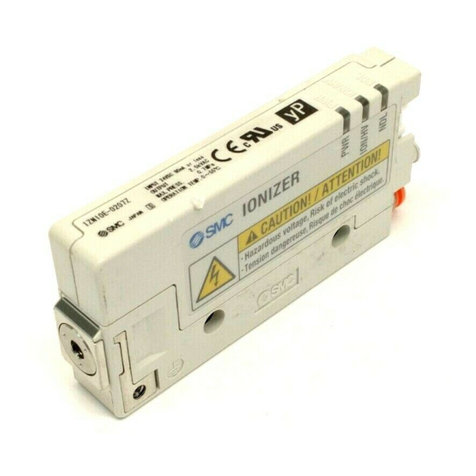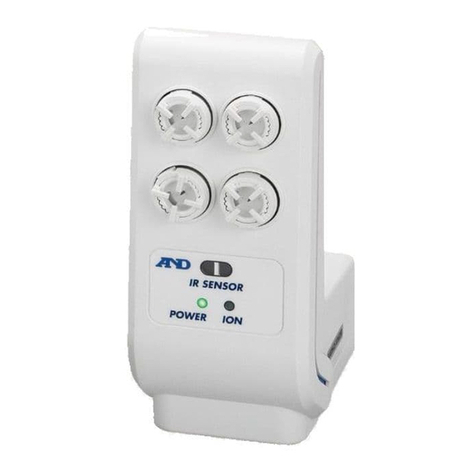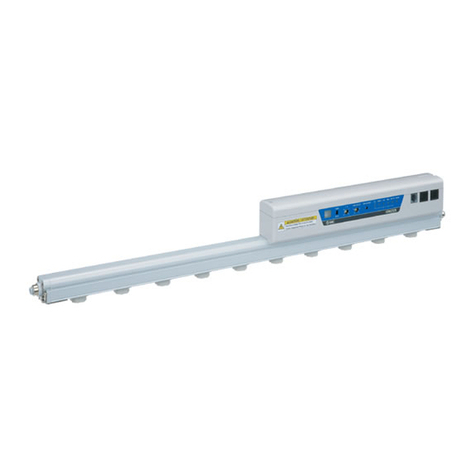
Discharge
time
(sec)
Front/Rear distance to the ionizer - Charged object location (mm)
Series
IZS31
Static electricity Removal Characteristic
s
1) Static
electricity removal
range / Ionizer
Air purge:
No
Electricity removal
range
Height 100
mm
Height 300
mm
Height 500
mm
Horizontal
distance
to the ionizer -
Charged
object
2)
Installation height
of
feedback sensor
Air purge: Yes (0.1 MPa)
8
7
6
5
Discharge
time
4
Without
sensor
3
2
With
feedback
sensor
1
0
0 100 200
Installation height of
feedback sensor
Ionizer
Feedback sensor
Charged plate
90
0
–60
Catalogue specification
0 100
Installation height of
height of
feedback
sensor
100 mm
600
mm
Ion
balance
(V)
Front/Rear distance to the ionizer - Charged object location (mm)
Data
2
Static electricity elimination features are based on data from using a charged plate (size: 150 mm x 150 mm,
(ANSI/ESD, STM3, 1-2000). Use this as a guideline for model selection only because the value varies depending on
depth
direction
Air purge: Yes (0.05 MPa to 0.7 MPa)
Electricity removal
100 mm
Height
Height
(mm)
Horizontal
distance
to the ionizer -
discharge
time / Ion
balance
1000 V to 100 V
400
500
–90
30
V
300 400
500
sensor
(mm)
100 mm
20 pF) as defined in the U.S. ANSI
standards
material and/or size of
the subject.
500
mm
mm
1500
mm
2000
mm
100 mm
object location (
mm
)

